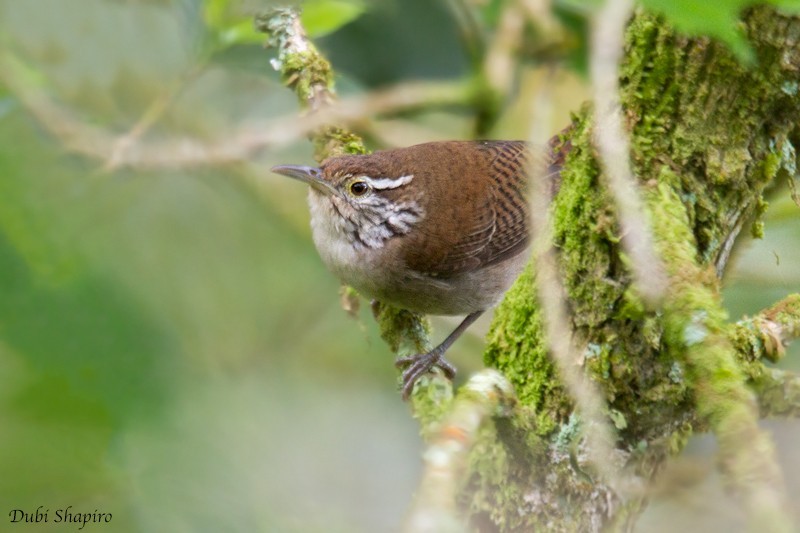Niceforo's Wren
A species of Thryophilus Wrens Scientific name : Thryophilus nicefori Genus : Thryophilus Wrens
Niceforo's Wren, A species of Thryophilus Wrens
Botanical name: Thryophilus nicefori
Genus: Thryophilus Wrens
Content
Description General Info
 Photo By Dubi Shapiro
Photo By Dubi Shapiro Description
A medium-sized wren, averaging 14.5-15cm in length. Adult birds are dull olive-grey on the head and mantle, becoming slightly more rufescent on the back. The wings are finely barred, with more broad barring on the tail. A long white supercilium is bordered behind the eye by fine black lines. The face is marked by black and white streaks. The underparts are white becoming greyish on the sides and flanks. The undertail coverts show broad black barring. Juvenile birds have not been described. 
Size
14 cm
Nest Placement
Cavity
Feeding Habits
Niceforo's Wren primarily forages on the ground, sifting through leaf litter for arthropods. It employs gleaning and pecking techniques to locate food, which includes hunting on branches and in tree holes, with a focus on a terrestrial diet close to the ground.
Habitat
Niceforo's Wren typically inhabits dry forests in upper tropical zones, with an altitudinal range from approximately 1100 to 1840 meters. The species favors areas with dense vegetation including a variety of plant species such as Tricanthera gigantea and Acacia farnesiana, as well as thick understories and abundant leaf litter. It has an affinity for tangled shrubbery and thorn scrubs, especially in riparian forest fragments. While niceforo's Wren can be found along shaded plantation edges, it seems less adapted to coffee plantation environments.
Dite type
Insectivorous
General Info
Feeding Habits
Bird food type
Distribution Area
Niceforo's wren is endemic to the valley of the Chicamocha River, as well as the Sogamoso, Suaréz, and Fonce river basins. These locations are within the departments of Boyacá and Santander, in the central northern part of Colombia. After the first specimens of Niceforo's wren were collected during the 1940s, no further sightings were recorded until two birds were seen in that area in 1989 and 2000. This may reflect the fact that this area was difficult to visit from the 1950s onward due to guerilla activity. In 2005 Oswaldo Cortes and colleagues discovered a disjunct population in the area of Soatá, approximately 100km south of San Gill, and in 2004-06 Thomas M Donegan and colleagues discovered a population in the Serranía de los Yariguíes, about 50km to the west of San Gill. 
Species Status
Niceforo's wren is listed as critically endangered on both the IUCN Red List and the Red Book of the Birds of Colombia. Surveys between 2004 and 2008 recorded 77 individuals. Based on these data the IUCN estimates the current global population is approximately 30-200 mature individuals. The surviving population is highly fragmented, with no single location holding more than 50 individuals. The major threat to this species is habitat loss. All known populations face a progressive loss of habitat caused by the transformation of forests into croplands, pressure from goat farming (which destroys the dense understructure the species prefers), forest fires and the drying up of streams and rivers. 

 Photo By Dubi Shapiro
Photo By Dubi Shapiro Scientific Classification
Phylum
Chordates Class
Birds Order
Perching birds Family
Wrens Genus
Thryophilus Wrens Species
Niceforo's Wren